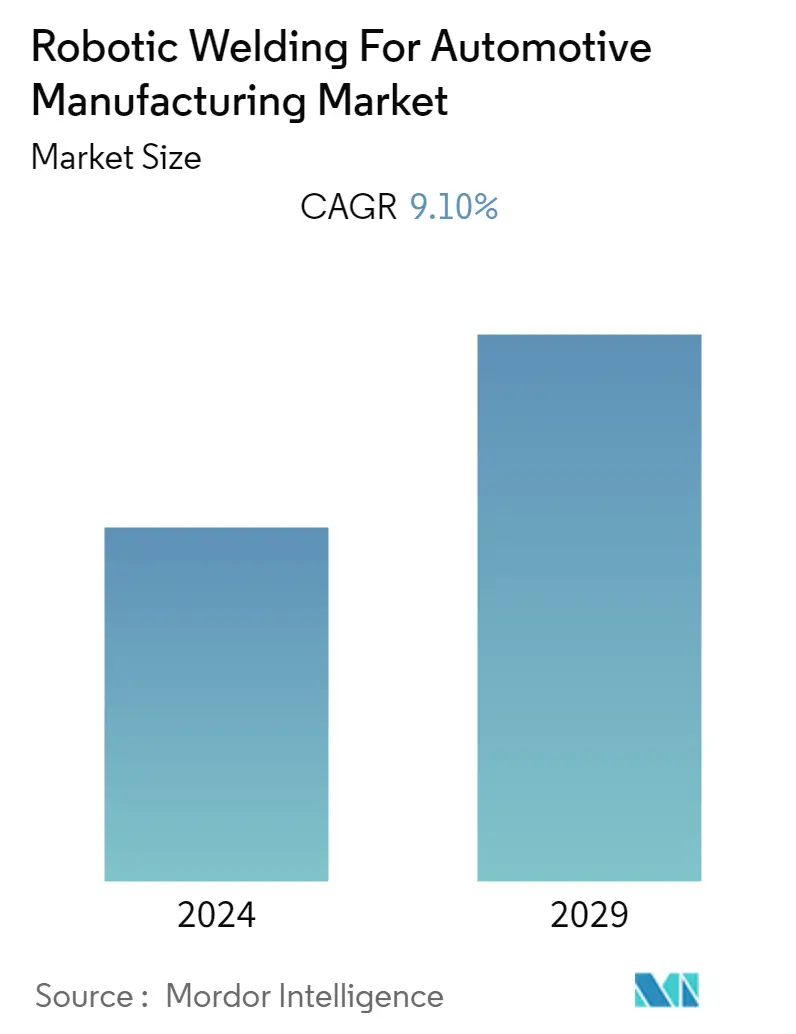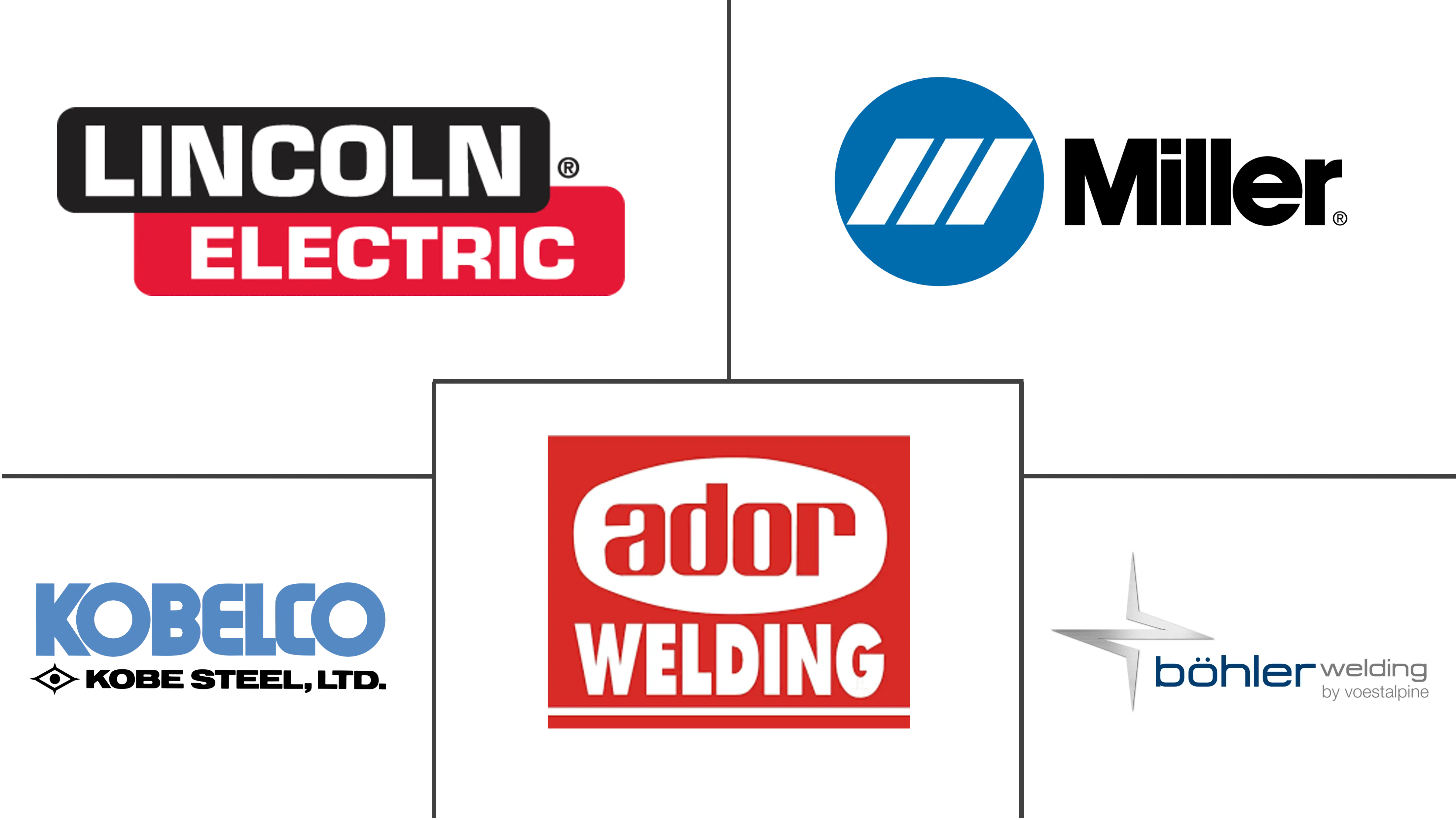Market Size of Robotic Welding For Automotive Manufacturing Industry

| Study Period | 2019 - 2029 |
| Base Year For Estimation | 2023 |
| CAGR | 9.10 % |
| Fastest Growing Market | Asia-Pacific |
| Largest Market | Europe |
| Market Concentration | Medium |
Major Players
*Disclaimer: Major Players sorted in no particular order |
Need a report that reflects how COVID-19 has impacted this market and its growth?
Robotic Welding for Automotive Manufacturing Market Analysis
The global robotic welding market for the automotive manufacturing market is projected to grow at a CAGR of 9.10% during the forecast period. COVID-19 has had an unprecedented and astonishing impact globally, with robotic welding seeing a positive impact on demand across all regions during the epidemic. The increase in CAGR is due to the demand and expansion of this market, which will revert to pre-pandemic levels once the pandemic is over.
- Robotic welding is an automated procedure that uses mechanized, programmed tools to weld and handles equipment in the industry. Industrial robots are becoming increasingly important in a variety of industries, like the automotive industry. Furthermore, the use of robots has resulted in exceptional results in terms of surface polish and dimensional accuracy throughout the sector.
- The automotive industry is anticipated to increasingly use robotic welding as a result of the transforming automotive industry. The industry has been known to use complex technology in order to make the most of high tensile strength steel for a robust assembling process. Spot welding is likely to have an impact on the expansion of these technologies in the automotive industry.
- The increasing global demand for automobiles is a major element driving the robotic welding growth. In addition, increased human-safety concerns in vehicle production plants are driving up demand for small, medium, and high-payload welding robots. In the automotive industry, a more complicated system is required for uninterrupted flow. Welding robots are given a range of commands to keep the assembly process moving. Using an autonomous robotic welding system, the machine is involved in the whole line function.
- Additionally, in 2020, the COVID-19 outbreak and spread had a negative impact on the robotic welding market, resulting in lower shipments of welding robots and associated peripherals. As a result, the revenue earned by them has decreased. As a result, the market's growth trajectory slowed significantly in the first half of 2020. This pattern persisted until the first quarter of 2021.
- However, low-skilled workers are progressively being replaced and displaced by welding robots. In the long run, however, reskilling and upskilling would result in the creation of more jobs in the majority of developed countries, but not in developing countries, where the proportion of low-skilled workers is far larger. The adoption of automation in emerging countries may have a detrimental impact because SMEs make up the bulk of any industry and are also the largest employees.
